Valencia is rapidly becoming one of the most sought-after tourist destinations in Spain. Increasingly popular with foreign tourists, it has been a popular destination with the Spanish for a number of years. Valencia is a very chic, modern city. Yet, it is one that has not lost its cultural and historical past.
Sitting on the Costa del Azahar – the orange blossom coast – Valencia is also blessed with some of Spain’s best beaches.
Fallas, Paella, Lonja de la Seda and, of course, the City of Arts and Sciences. Whether you are looking for a city break destination, or a longer holiday, Valencia is sure to have what you are looking for.
Brief history of Valencia
Valencia is Spain’s third largest city, with a population of approximately 815,000 people. The name Valencia is derived from the Latin word ‘Valentia’ which means ‘valour’ or ‘strength.’
It is commonly believed that Valencia was founded in the 2nd Century BC, after Roman soldiers successfully conquered the Iberian local rebel, Viriatus.
In 1982, Valencia was granted autonomous status. Valencian and Castilian are the official languages.
During the 1990s, Valencia underwent a massive restoration program. Age-old landmarks were restored to their former glory, including the old towers of the medieval city (Quart and Serrano Towers), a large maritime paseo (walkway) was constructed and Valencia’s port (the largest in the Mediterranean) was completed revamped.
Valencia was firmly placed on the international tourist circuit when the 32nd America’s Cup was held in Valencia, in 2007.
With some of Spain’s best beaches and most important landmarks, Valencia is a very trendy, fashionable place with a great combination of old and new. Valencia really has something to offer everyone. Here is a short selection of some of Valencia’s highlights.
City of Arts and Sciences
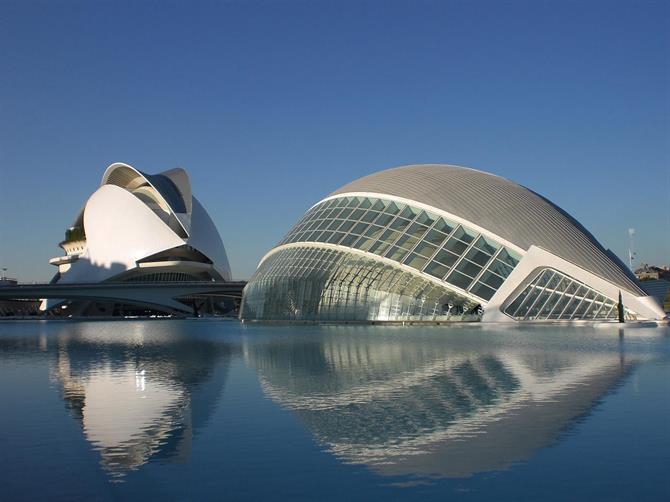
Without a doubt Valencia’s most recognised landmark. Built by Valencia’s own architect, Santiago Calatrava. The City of Arts and Sciences offers the biggest aquarium in Europe, a laser IMAX cinema, the Palau de les Artes and the Palau de la Musica.
Located in the stunning Turia Gardens, on the old riverbed Turia. An area that was only recently reclaimed from the river in the 1980s. One of the beautiful landmarks in the city. A must see. Map
Cathedral of Santa Maria de Valencia
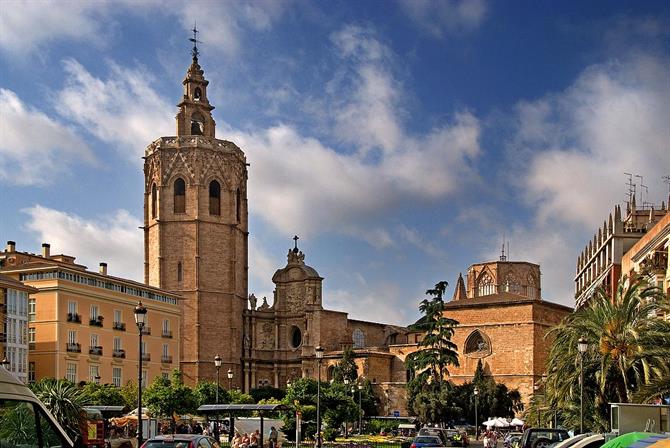
The largest parts of the Cathedral were constructed between the 13th and the 15th centuries. They are distinctly Gothic in style.
Widely recognised by Christian historians as being the home, of the authentic Holy Chalice (Holy Grail), that was used at Christ’s last supper. The Chalice has been used in numerous official Papel visits, including Pope Benedict XVI’s in 2006.
The Cathedral also contains some of the Iberian Peninsula’s most dated and most beautiful examples of Quattrocento paintings, by Roman artists engaged by the Valencian Pope Alexander VI. Map
Parque Natural de la Albufera
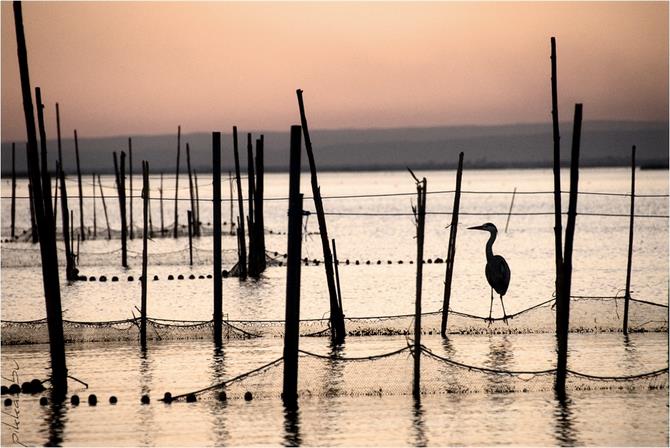
Situated just 11kms south of Valencia is the Albufera National Park. A freshwater lagoon covering some 21,120 hectares. A natural paradise.
Its proximity and the diversity of the flora and fauna make it well worth a visit. Boat rides and nature spotting tours are popular and easily organised. Map
Valencia’s Old Town – Centro Histórico
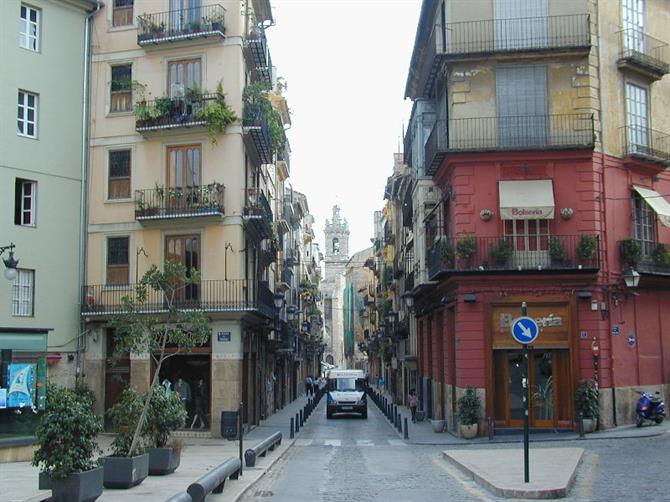
Visiting the historic city in Valencia is almost like stepping back in time. Narrow, windy streets, are a constant reminder of Valencia’s Moorish past.
Valencia is also famed for its nightlife, they really know how to party! Barrio del Carmen – which is situated in the northern part of the Historic Quarter is definitely the place to be once the sun sets. Map
Torres de Quart
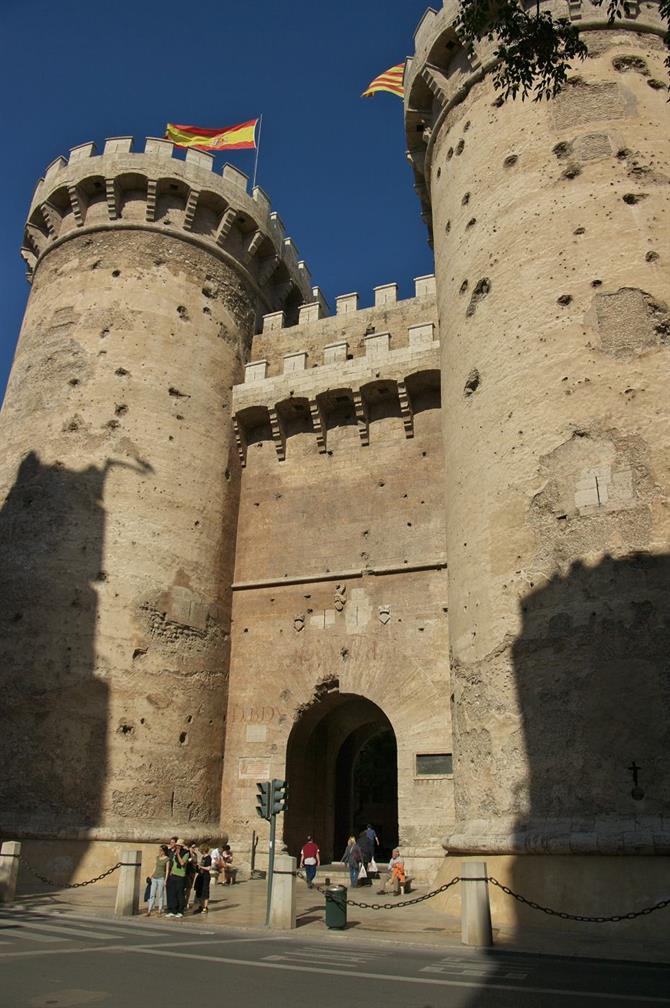
The Torres de Quart are part of the old defensive walls that surrounded the city. Until recent restoration in the 1980s, they bore the scars of Napoleon’s canon balls. Indeed, the Torres de Quart were Napoleon’s point of entry into the city.
Sitting in one of the many cafes that surround the Torres de Quart at dusk is highly recommended. Just after dusk, there are thousands of bats that take off into the night, providing quite a spectacle. Map
Torres de Serranos
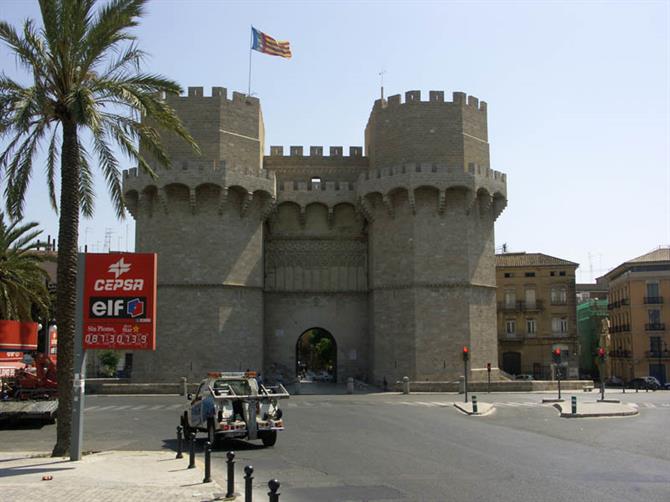
The gates to the city. The Torres de Serranos are one of Valencia’s best known landmarks. Construction finished in 1391 and they are built in pure Gothic style. The Torres de Serrano are actually Europe’s largest Gothic city gateway.
They were used as a prison for the local nobility (much like the Tower of London) from 1586 to 1887. Visiting the Torres is highly recommended as the terraces offer fantastic views over Valencia. Map
Las Fallas
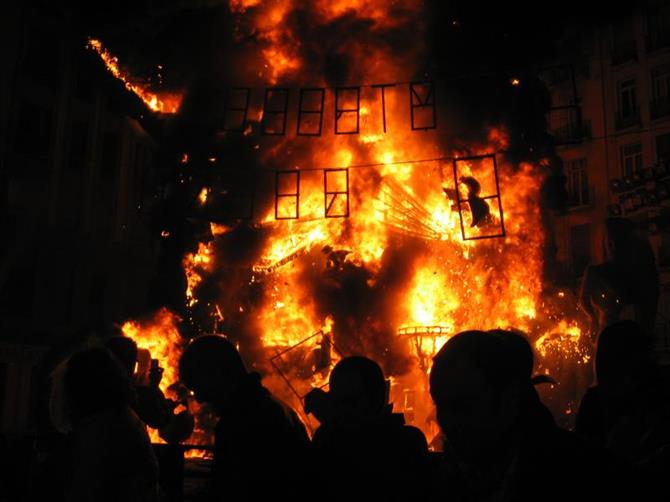
Las Fallas is Valencia’s most famous festival. Translated literally, ‘las fallas’ means ‘the fires’ in Valencian. Traditionally an event to celebrate St. Joseph, Las Fallas has evolved into a massive five-day street party, a yearly event that takes place in March.
As the name implies, fire, plays a central part. Puppets – ninots – are constructed throughout the year, some of them costing up to 75,000€. Entire neighbourhoods will contribute to the making of their ninot. The puppets are carefully crafted and very life-like (more recent celebrations have included puppets of politicians and celebrities).
On the 19th of March, the day of the burning, the puppets are stuffed with fireworks and at precisely 12:00am (midnight), they are set alight. Each year, one ninot, is ‘pardoned’ – by popular vote. Instead of being burned, it makes its way to the local Museum of the Ninot.
Mercado Central – Central Market
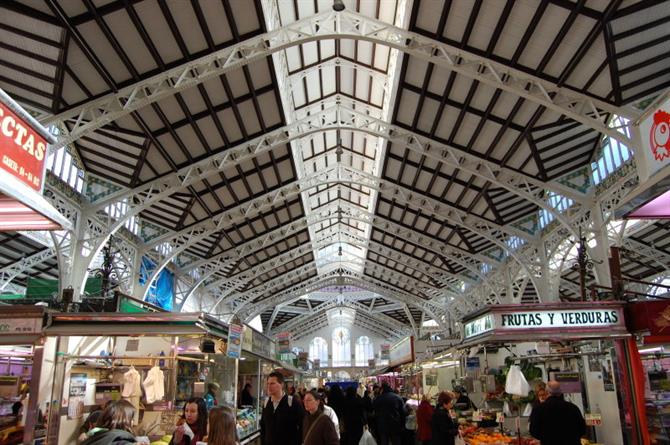
The Mercado Central was inaugurated by King Alfonso XIII in 1928. With a surface area of over 8,000 square meters, it is one of the largest markets in Europe. With over a 1,000 stalls selling every conceivable item. The atmosphere is not to be missed.
Open mornings – 07:30-14:30 – Monday to Saturday. Map
La Lonja de la Seja – Silk Exchange
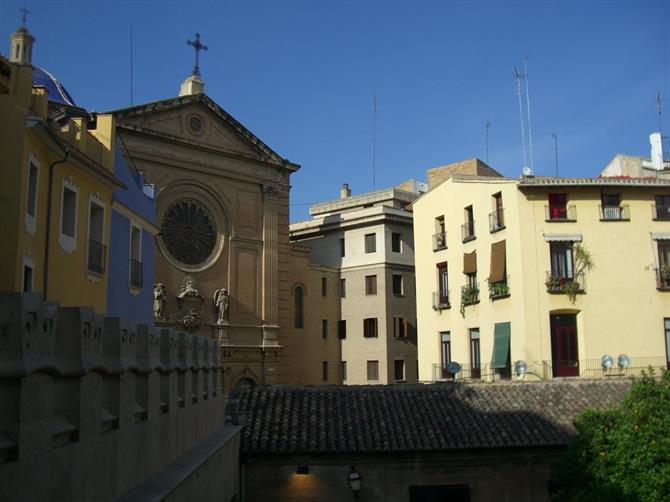
Built by the renowned architect, Pere Compte, during the 15th Century when Valencia was at the peak of it’s golden age. La Lonja de Seda was declared a UNESCO World Heritage site in 1996.
It is considered to be one of the best examples of Gothic architecture in all of Europe. The contracts room is particularly beautiful, with a series of spiral columns. Map
Beaches in and around Valencia
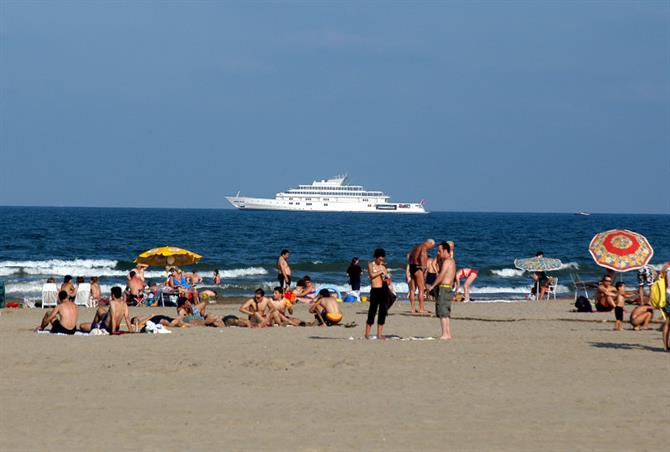
Las Arenas and La Malvarrosa are the main city beaches. The Paseo – walkway – that runs along Las Arenas, has some great bars and restaurants. Offering all kinds of local specialities (Valencia is said to be the home of Paella…be sure to try some).
Further South, the blue flag beaches of Pinedo and El Saler are also of note. They are both close to the La Albufera National Park. There are regular, yellow ‘beach’ buses going from the city centre.
A short drive Northwards leads to three more spectacular beaches, Puig, Canet and Puebla de Farnals.
